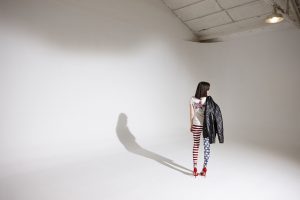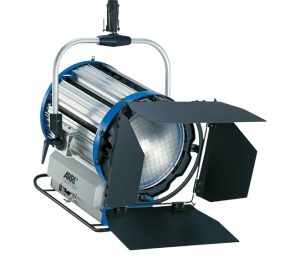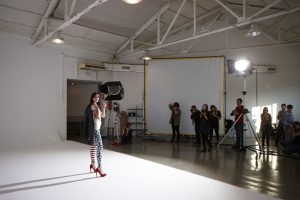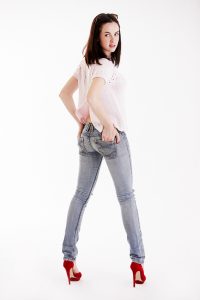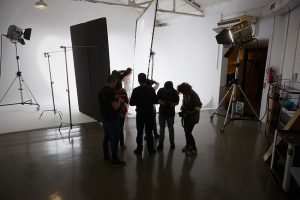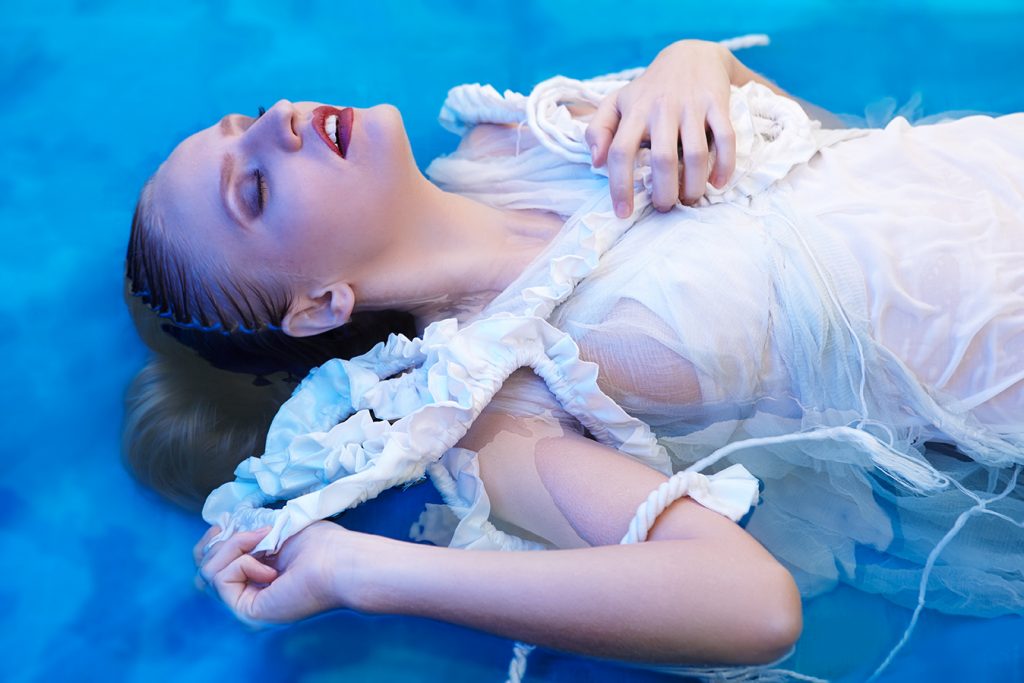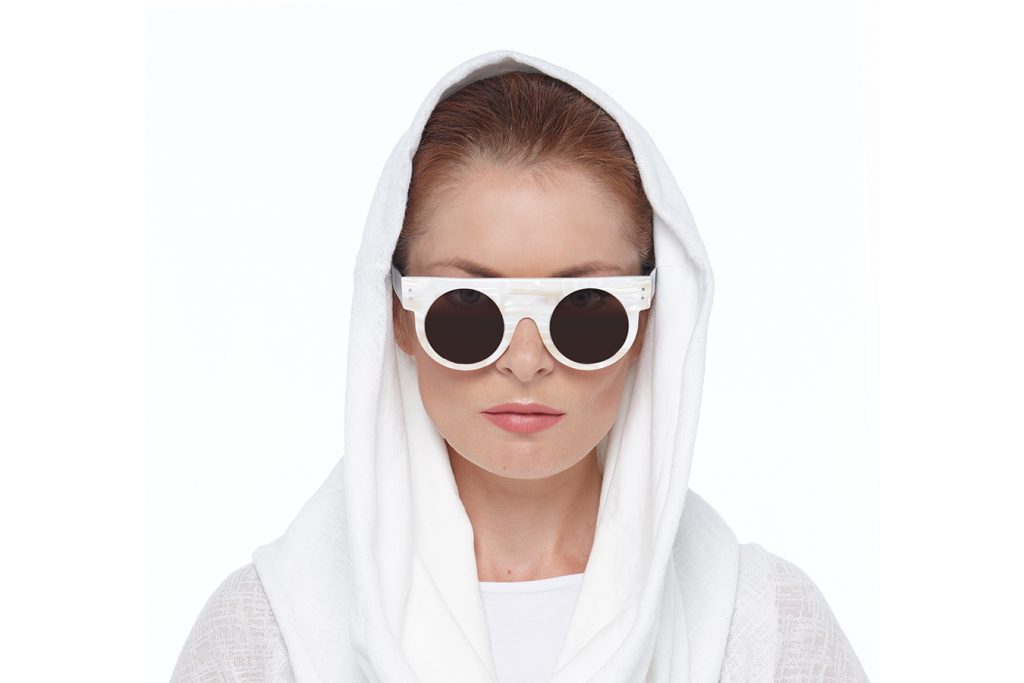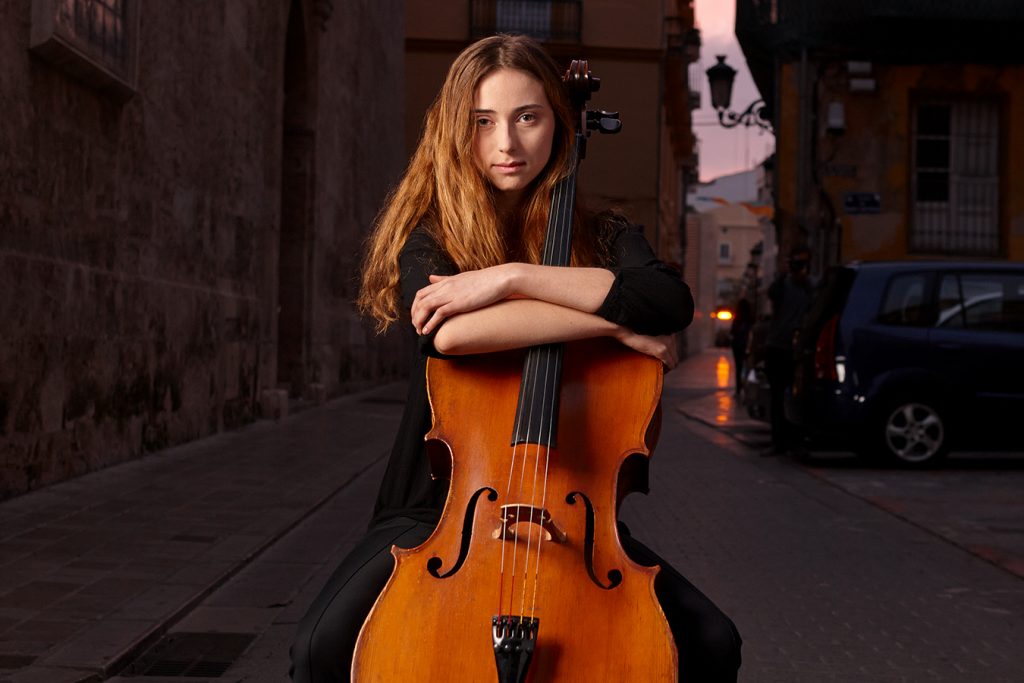In the previous post we saw that working with a Fresnel HMI is better than working with a tungsten Fresnel for several reasons. They are two to five times more efficient and give off less heat, although they must be started with a ballast that creates the electric arc that acts as a light source, and this high voltage power source is large, heavy and expensive.
Its color temperature is 5500 ºK so they can be mixed with sunlight and the quality of light is different from that produced by a tungsten lamp because the HMI is more punctual than a tungsten lamp. The more powerful the tungsten is, the longer the filament is and therefore the less punctual, hence the harder and more uniform the light from an HMI.
lighting scheme I
Model Ada Puig
Artificial light follows the law of the inverse of the square of the distance, so it decays as it gets farther away. In this case, as we wanted it to be a very harsh lighting, the focus was moved away from the model. In this way the light/model distance with respect to the light/background distance was minimized and the background was quite clear.
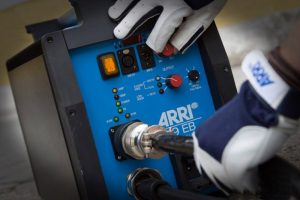 Ballast © EFD internacional
Ballast © EFD internacional
This session was a class of the Professional Course of Lighting applied to Fashion that I teach at GrisArt and we did it on the sets of Top Studios, in Barcelona. We have two 5k Arri HMIs which allowed us to work with a good diaphragm.
After several shots with hard light, we chose to blur the light and for this we interposed a 3,60×3,60 mts Avenger canopy between the light and the model.
By keeping the HMI far away, but the canopy close to the model we were able to make the illumination area significantly larger than the point light of the HMI. First we moved the lamp to a “flood” position to achieve greater coverage than in the “spot” position and opted for a Rosco “tought white diffusion” type gauze. “Tought” means that the polyester it is made of is highly heat resistant and “white” means that it has medium diffusion, which usually eliminates shadows. On the opposite side of the canopy, two large reflective surfaces were placed to decrease the contrast of the scene even more and achieve a very soft image that worked very well for a large shot and even better for a very close shot.
Lighting scheme II
A second HMI was placed directly towards the back and bouncing off the white wall generated some effect light, very soft, which entered from the opposite side of the main light.
Throughout the blog we have explained different examples of how to work with continuous lights, from HMI to LEDs or fluorescent lights. It is very comfortable to work with this type of light because we can see the contrast of the scene at a glance and we do not have to be measuring with the handheld meter at every moment, as when we work with flash. The flash however has the advantage of being very powerful and its power very variable.
To finish this post, it seems appropriate and interesting to see how are the power ratios between the different continuous light sources that are usually used in photography, video and film. In Barcelona Studios I took as a reference an Arri HMI of the smaller ones and compared it with other light sources. Finally, Lea, a student in the class, kindly volunteered to see what the effects of these light sources look like on a face. I started with the Arri HMI with diffuser and ended up with the 4lights led panels.
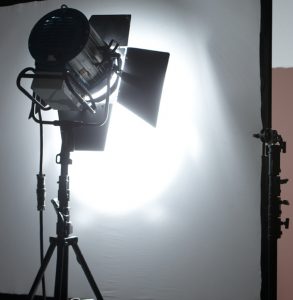 Arri HMI 1,2 K with Avenger diffuser – 3 EV
Arri HMI 1,2 K with Avenger diffuser – 3 EV
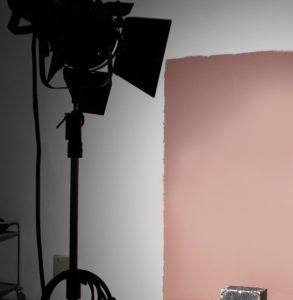 Profoto HMI 800 W – 1,5 EV
Profoto HMI 800 W – 1,5 EV
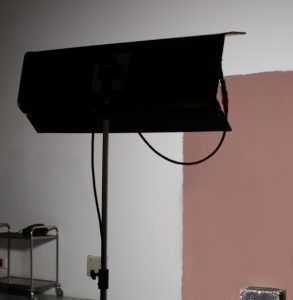 4-tube Kinoflo – 3,5 EV
4-tube Kinoflo – 3,5 EV
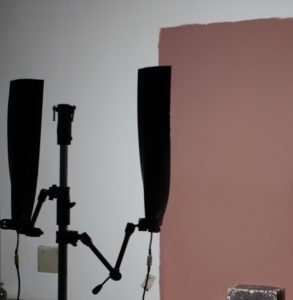 Two Dulux Swords
Two Dulux Swords
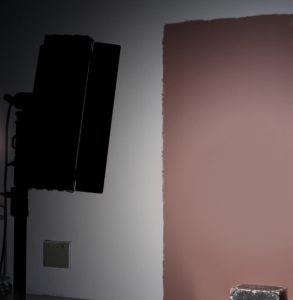 Leds panel 4lights – 1,5 EV
Leds panel 4lights – 1,5 EV
As an example, in this last situation of working with 4lights led panels, at 400 ISO, I shot at 1/60, f 5.6. We can see that to work with these accessories we must have a camera that works very well at high sensitivities.
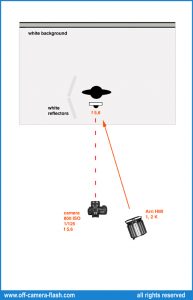
lighting scheme I
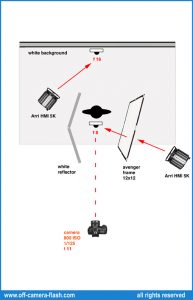
Lighting scheme II
All rights reserved. © Isarrualde Photography
No part of this publication may be reproduced in any form or by any means without the written permission of the author.

